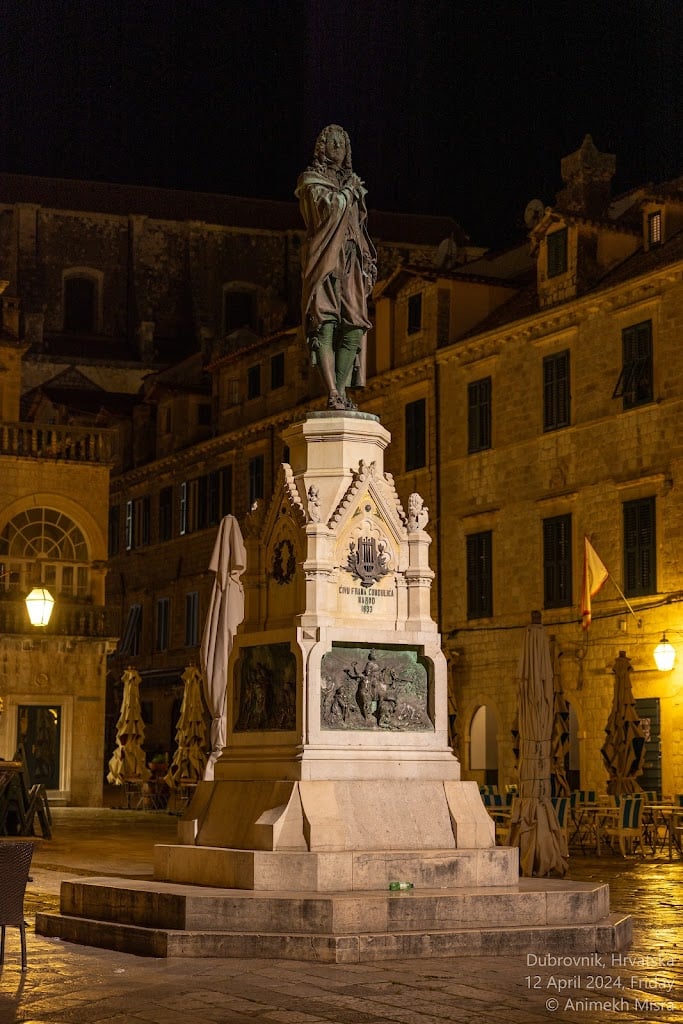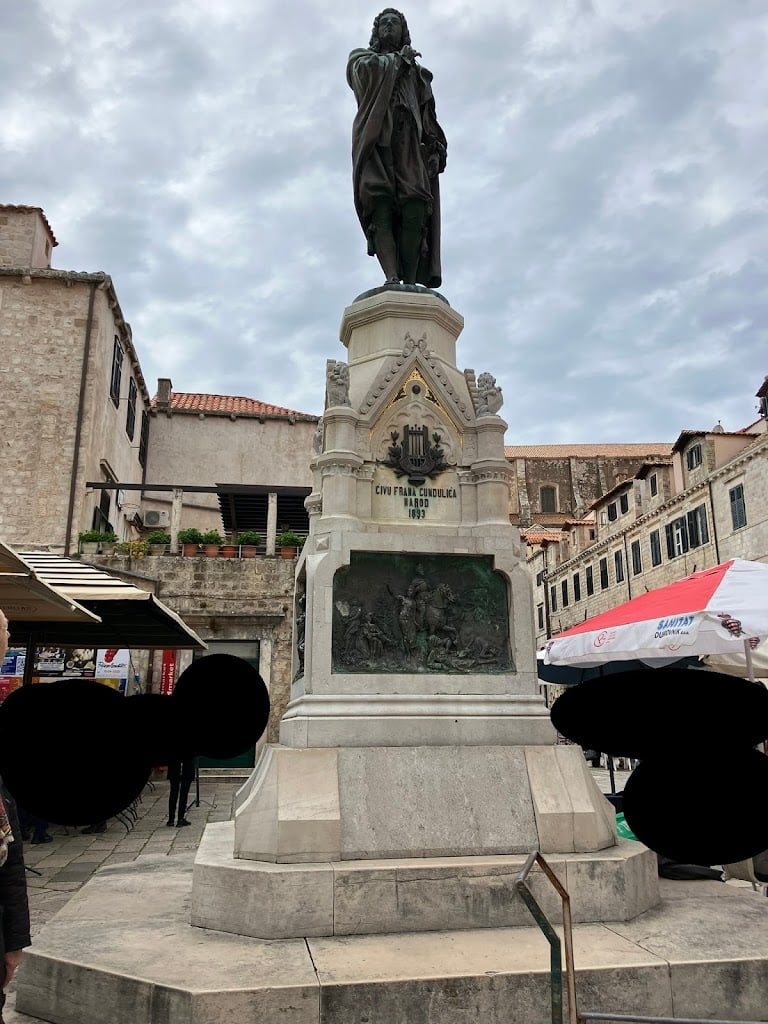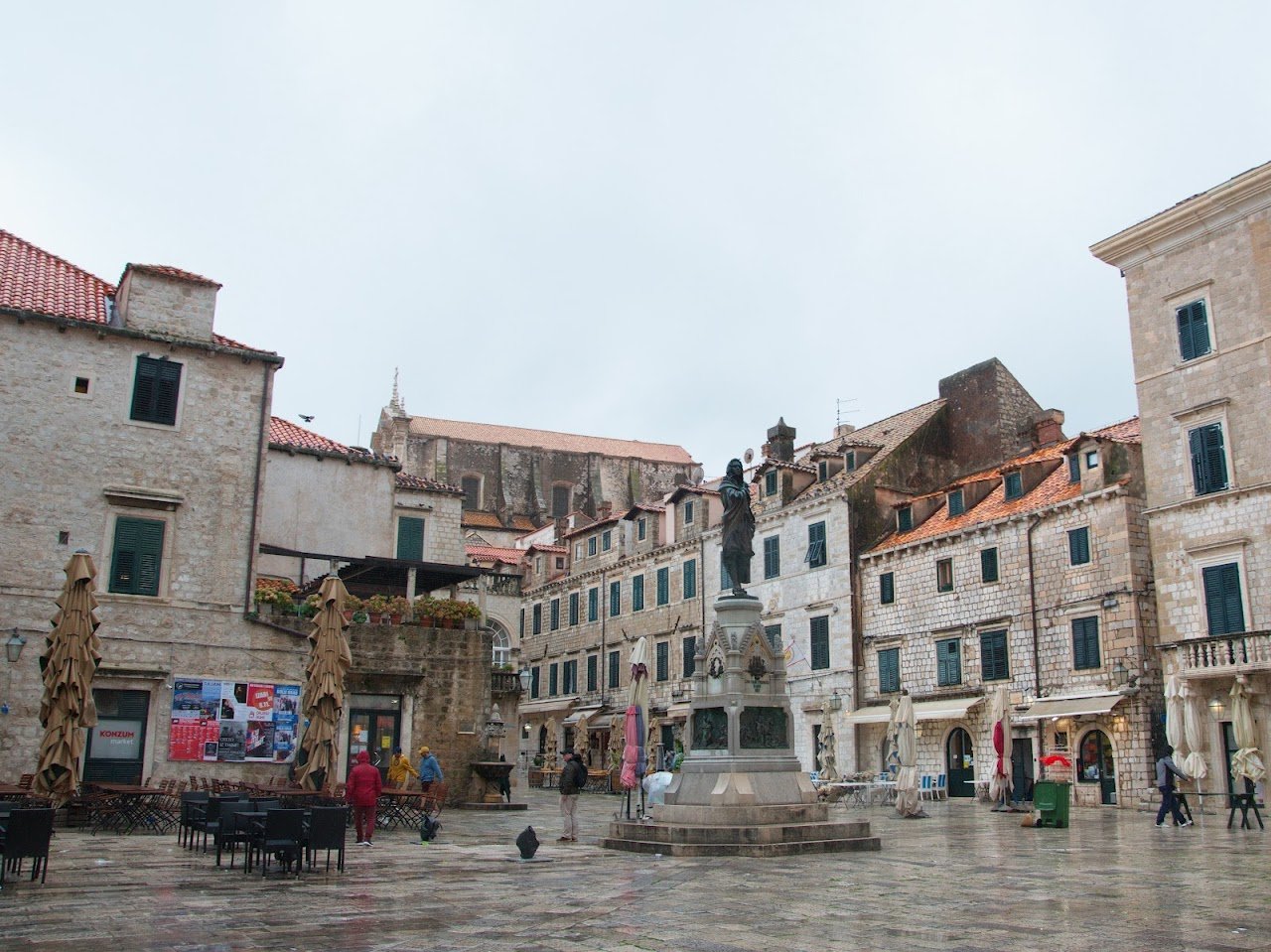Monument of Ivan Gundulić



About Monument of Ivan Gundulić
Get the inside scoop on Monument of Ivan Gundulić from local experts, travel creators, and tastemakers. Browse genuine trip notes, Monument of Ivan Gundulić reviews, photos, travel guides, and itineraries from real travelers and plan your trip with confidence.
What people say
Pedro Pereira
Available for hire
"The unveiling of the Gundulić monument in Dubrovnik on May 20, 1893, was a pivotal moment in the city's political landscape, highlighting the tensions between the Croat and Serb-Catholic factions in the pre-World War I era. The initiative to erect the monument originated from the "Dubrovnik Youth," an organization associated with the Serb-Catholic movement, which proposed commemorating the 300th anniversary of Gundulić's birth in 1888. Under the leadership of Mayor Rafael "Rafo" Pucić, the Municipal Council appointed a five-member committee composed of respected intellectuals, including Medo Pucić, Pero Budmani, Ivo Kaznačić, Mato Vodopić, and Luko Zore, to oversee the project.
The project faced challenges early on, with several committee members passing away or resigning for various reasons. In 1891, a reconstituted committee, including members like Marinica Giorgi, Lujo Bizzarro, and Niko Bošković, took charge, increasing the budget to 15,800 florins. They employed various fundraising strategies, including outreach to emigrants in Argentina, to finance the monument's construction.
The monument, created by Croatian sculptor Ivan Rendić, was unveiled in Poljana, Dubrovnik's largest square, amid a charged atmosphere of cultural and political significance. The event attracted supporters from both the Croatian Party of Rights and the Croatian People's Party, who sought to emphasize the Croatian national character of the celebration. In contrast, the Serb Party aimed to showcase a Serb-Catholic presence, resulting in a gathering that symbolized the divisions between these opposing national movements.
The unveiling was ultimately conducted by Baron Frano Getaldić-Gundulić, the last male descendant of the Gundulić family. This moment marked not only the commemoration of a literary figure but also the broader socio-political context of the region, underscoring the enduring legacy of Gundulić and the complexities of national identity in Dubrovnik's history."
Read more in:
Mentioned in these guides
Save this spot for later or start mapping out a new trip today
